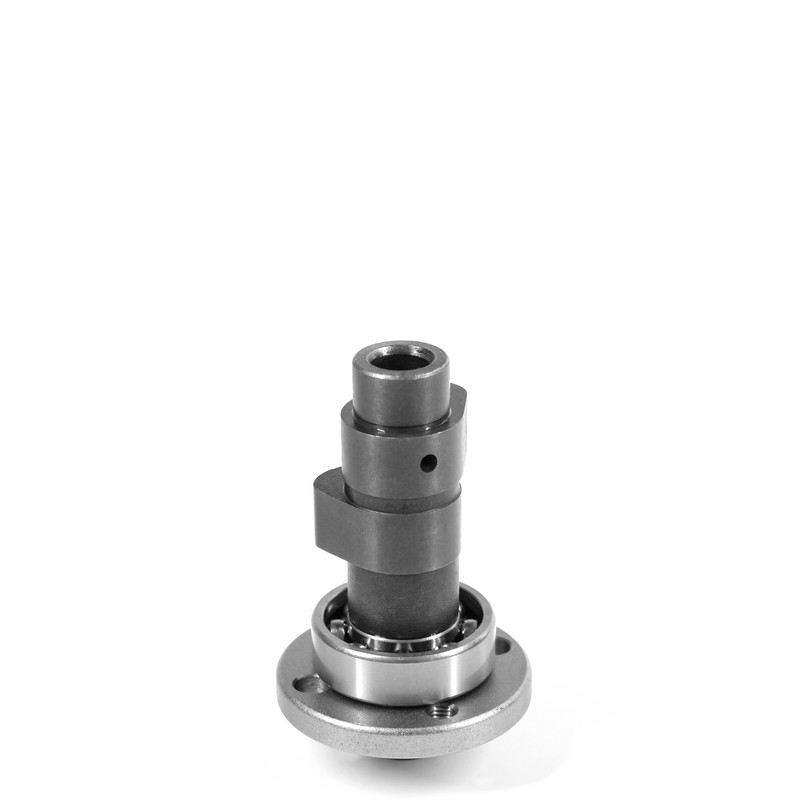The HONDA Motorcycle Camshaft is a cornerstone of engine performance, dictating the precise timing of valve openings and closings. This critical component directly influences power delivery, fuel efficiency, and the overall character of your motorcycle's engine. Understanding its function, recognizing signs of wear, and knowing your options for maintenance and upgrades are essential for any rider or mechanic seeking to optimize performance and ensure longevity. This comprehensive guide delves deep into the world of camshafts, providing the expert knowledge you need to make informed decisions.
Located within the cylinder head, the camshaft is a rotating shaft with a series of oblong lobes. As it spins in sync with the crankshaft, these lobes push against the valve train (including lifters, pushrods, and rocker arms, depending on the engine design) to open the intake and exhaust valves at the exact right moment. The specific profile of these lobes—their shape, size, and orientation—determines critical factors like valve lift and duration, which are fundamental to an engine's breathing capability and, consequently, its power band.
To better assist your research and troubleshooting, here are five highly relevant long-tail keywords that address common user queries with good search volume and manageable competition. These phrases will guide the detailed discussions in the following sections.
A failing HONDA Motorcycle Camshaft will rarely fail without warning. Recognizing the early symptoms can save you from catastrophic engine damage and more expensive repairs. These signs often relate to improper valve timing or physical wear on the camshaft itself and its related components.
Understanding the potential Honda motorcycle camshaft replacement cost is crucial for budgeting. The total expense is a sum of parts and labor, and it can vary dramatically based on the specific motorcycle model and whether you're performing the work yourself. Labor is the most significant variable, as replacing a camshaft is an intensive engine-out procedure on some models.
The table below provides a generalized cost estimate breakdown to give you a clearer picture.
| Service | Low-End Estimate | High-End Estimate |
| Parts Only (OEM) | $400 - $800 | $1,000 - $2,500+ |
| Professional Labor | $500 - $900 | $1,200 - $2,000+ |
| Total Estimated Cost | $900 - $1,700 | $2,200 - $4,500+ |
For riders looking to extract more power from their engine, upgrading the HONDA Motorcycle Camshaft is one of the most effective modifications. The best performance camshaft for Honda CBR models will depend on your riding style—whether you seek more mid-range punch for street riding or a top-end power gain for track use. Performance camshafts achieve this by altering the valve lift and duration to allow the engine to ingest more air and fuel.
Knowing how to inspect a Honda motorcycle camshaft is a valuable skill for preventative maintenance. A visual and physical inspection can reveal early signs of wear before they lead to failure. This process requires removing the valve cover and having a clean, well-lit workspace.

After any camshaft-related service, correct reassembly is non-negotiable. Proper Honda motorcycle camshaft timing marks alignment ensures the valves open and close in perfect sync with the piston's position. Incorrect timing can lead to poor performance, engine damage, or in severe cases, piston-to-valve contact, which is catastrophic.
With proper maintenance, especially regular oil changes with the correct grade of oil, a HONDA Motorcycle Camshaft can last the lifetime of the engine—often well over 100,000 miles. The primary cause of premature camshaft wear is oil-related, either from infrequent changes, using the wrong oil, or oil contamination. High-performance riding and aggressive camshaft profiles can also accelerate wear.
Replacing a camshaft is an advanced-level mechanical task. It requires a high degree of technical skill, a comprehensive set of tools, and a meticulous approach. The procedure involves disassembling a significant portion of the top end of the engine and, most critically, achieving perfect Honda motorcycle camshaft timing marks alignment upon reassembly. For most riders, this job is best left to a qualified professional to avoid the risk of severe and costly engine damage.
Installing the best performance camshaft for Honda CBR or other models fundamentally alters the engine's volumetric efficiency. A more aggressive cam profile typically holds the valves open for a longer duration and/or with greater lift. This allows more air and fuel into the combustion chamber, increasing power. However, this often shifts the power band higher in the RPM range, which can reduce low-end torque. To fully realize the benefits and maintain drivability, supporting modifications like a full exhaust system and an ECU tune are almost always necessary.
While different from the mechanical camshaft itself, a failing camshaft position sensor will produce distinct electronic symptoms of a bad camshaft on Honda motorcycle systems. These include intermittent stalling, the engine failing to start, sudden loss of power while riding, and a persistent check engine light with codes like P0340 (Camshaft Position Sensor "A" Circuit Malfunction). The engine may crank but not start because the ECU doesn't receive the signal needed to fire the spark plugs.